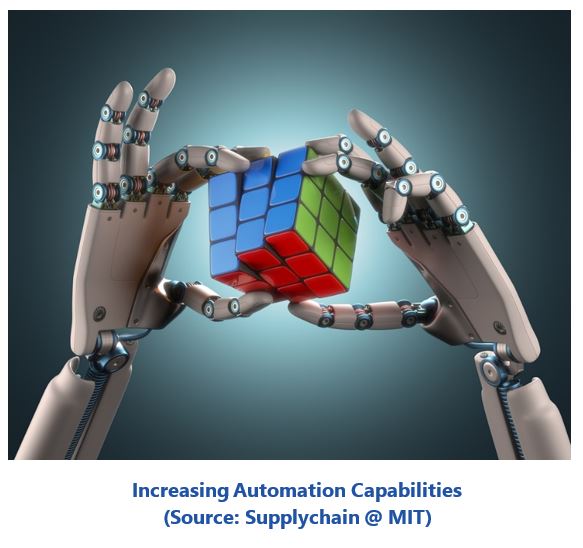

Manufacturing continues to rely on human labor, however, this reliance has drawbacks. These include a shortage of workers with the appropriate skills and the inherent variability in the way individual workers perform, with human-induced errors not uncommon. To address these drawbacks, inventors and engineers have applied available technology to replace or supplement the human element where possible. The Fourth Industrial Revolution has ushered in a new amalgamation of technological advances with the promise to greatly reduce industry’s exposure to human fallibility, while capitalizing on and enhancing humans’ strengths.
Companies need to take significant steps now to overcome their cultural inertia and implement new technologies, not only to improve their operations but also to keep those operations viable when faced with newer foreign competitors that often have both lower labor costs and are building new state-of-the-art facilities.
All manufacturing relies on human labor to some extent. The human brain continues to be an amazing, quickly-adapting, unmatched “computer” attached to a very dexterous and geographically-mobile physical body. This allows humans to accomplish multiple complicated tasks in a quick, cost-effective manner. In fact, we measure the efficacy of automation using this standard of human labor.
Unfortunately, this resource has drawbacks in today’s manufacturing. It’s emotional. It gets ill. It’s prone to mistakes. It gets tired. It gets bored. It leaves and is getting harder to replace.
These imperfections lead to a cascade of consequences. An incorrect decision can lead to production losses, equipment damage, safety incidents, environmental violations, etc. When a well-trained resource leaves or is missing, the organization can be exposed to a higher number of mistakes. Even a delayed decision due to missing expertise can be costly. The “Great Shift Change” is accentuating this liability.
This isn’t an earth-shattering revelation. Automation has been used to address these shortcomings for centuries. Starting with the most menial of tasks, engineers and inventors have gradually employed technologies to replace human labor. As we deployed technology, these menial tasks began to be performed 
Today’s automation technology can perform tasks that require greater human-like cognition. Manufacturers can capitalize on this by capturing current worker knowledge and institutionalizing it in automation. This allows knowledge to be accessed when needed, regardless of the people present.
The level of computing resources available today is astounding. Current analytic dashboards apply this captured knowledge to distill plant data into consumable and actionable information, allowing less-experienced staff to act as if they were the most experienced. Augmented reality connects staff to information precisely when that information is needed. Mobile solutions can bring more experienced staff into the situation even when geographically distant, allowing quicker decisions and actions. Simulations and digital twins can be deployed for better operator training. This is incredibly important given that some situations may only be experienced once or twice in a worker’s career. These digital twins also lay the foundational work for predictive and prescriptive analytics; allowing users to run “what-if” scenarios and define possible corrective courses of action.
ARC Advisory Group clients can view the complete report at ARC Client Portal
If you would like to buy this report or obtain information about how to become a client, please Contact Us
Keywords: Procedural Automation, Analytics, Dashboards, Knowledge Capture, Digital Transformation, Mobile, Augmented Reality, Artificial Intelligence, ARC Advisory Group.

